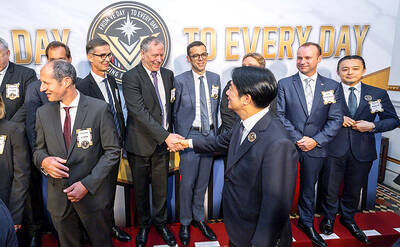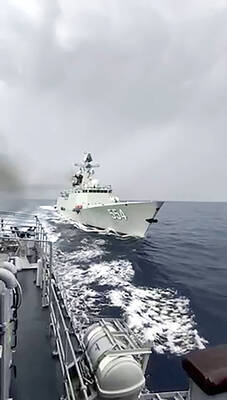Ever tried waving your mobile phone around in the air for a better signal? Of course you have. But if you see assistant professor Romit Roy Choudhury of Duke University in North Carolina apparently doing so, he’s not worrying about poor reception. He’s using his phone as an electronic pen to write reminder notes.
In 2005, Choudhury was a PhD student at the University of Illinois in computer science. Often forgetting things, he wanted to have a quick and easy way of jotting information down.
“I envisioned having a pen with a wireless interface and an accelerometer. My idea was to be able to write in the air with the pen and click a button to email the handwriting to my email address. Such pens were unavailable and I shelved the idea,” Choudhury said.
Since moving to Duke, he’s revisited the concept thanks to accelerometers in the latest smartphones. An accelerometer senses positional changes: it’s the device that prompts the screen image to flip from portrait to landscape when the phone is turned sideways. It also enables games with repetitive movements.
“At that point, I had the idea of using the phone as a pen, since the phone has both the accelerometer and the wireless capability,” he said. “My students jumped on to the idea and did a wonderful job of turning it into a good prototype. This first round of prototyping took around six months.”
Sensing the phone’s orientation or playing a game is trivial compared to recognizing air writing. His students started by using the phone to gesture a simple square, soon finding it was tough to achieve the right shape.
“Then, one day, after innumerable revisions to the algorithm, we suddenly saw a near-perfect square,” he said.
Working through the alphabet (and numbers) has proved challenging for Sandip Agrawal, electrical and computer engineering senior at Duke’s Pratt School of Engineering and post graduate student Ionut Constandache. The standard Nokia N95 being used for the experiments has a three-axis accelerometer to detect the X, Y and Z directions.
The students wrote a Python script to obtain 30 to 35 instantaneous acceleration readings a second and taking an average to overcome “noise.” Using a wireless link, the readings from the phone were processed on a separate computer with MATLAB, a high-level computing language for mathematical computation.
The prototype software now recognizes capital letters, numbers and simple shapes. It works by interpreting the geometric shapes and the order in which the user gestures them. An A, for example, consists of three distinct strokes. Every stroke, angle, and lift of your phone is significant if you’re trying to interpret air writing on an imaginary plane. As the phone doesn’t have a gyroscope, there are difficulties in distinguishing rotational motion from linear acceleration if the phone is turned.
At the moment, the phone wirelessly sends the recorded data to an adjacent computer for processing. It quickly returns the results to the phone as text, image and an email. You also have to write large, distinct letters — not joined-up — for the recognition to work.
“The computations are simple enough to be done on the phone. It’s just a matter of time,” Choudhury said. “We simply didn’t have time to port the code since we are working on so many interesting projects.”
So what are the remaining challenges for the device, now dubbed the PhonePoint Pen by the researchers? Correcting mistakes when writing is an obvious one: the idea is to allow users to choose a movement that means “delete,” such as several horizontal shakes. When writing on the move, the phone’s accelerometer picks up your movement as well as its own, distorting the output. Better algorithms, more sophisticated built-in accelerometers and a gyroscope would all help.
Air writing is useful for noting where you left the car at the airport or quickly jotting down an appointment time. Choudhury also thinks it might help people with poor finger control or speech problems.
So when will the researchers release the prototype software for people to try out?
“We believe that will be possible in few months,” he said. “We have the current prototype working on Nokia N95, but the technology can be used for any programmable smartphones with small tweaks.”

DEFENDING DEMOCRACY: Taiwan shares the same values as those that fought in WWII, and nations must unite to halt the expansion of a new authoritarian bloc, Lai said The government yesterday held a commemoration ceremony for Victory in Europe (V-E) Day, joining the rest of the world for the first time to mark the anniversary of the end of World War II in Europe. Taiwan honoring V-E Day signifies “our growing connections with the international community,” President William Lai (賴清德) said at a reception in Taipei on the 80th anniversary of V-E Day. One of the major lessons of World War II is that “authoritarianism and aggression lead only to slaughter, tragedy and greater inequality,” Lai said. Even more importantly, the war also taught people that “those who cherish peace cannot

Taiwanese Olympic badminton men’s doubles gold medalist Wang Chi-lin (王齊麟) and his new partner, Chiu Hsiang-chieh (邱相榤), clinched the men’s doubles title at the Yonex Taipei Open yesterday, becoming the second Taiwanese team to win a title in the tournament. Ranked 19th in the world, the Taiwanese duo defeated Kang Min-hyuk and Ki Dong-ju of South Korea 21-18, 21-15 in a pulsating 43-minute final to clinch their first doubles title after teaming up last year. Wang, the men’s doubles gold medalist at the 2020 and 2024 Olympics, partnered with Chiu in August last year after the retirement of his teammate Lee Yang

The Philippines yesterday criticized a “high-risk” maneuver by a Chinese vessel near the disputed Scarborough Shoal (Huangyan Island, 黃岩島) in a rare incident involving warships from the two navies. The Scarborough Shoal — a triangular chain of reefs and rocks in the contested South China Sea — has been a flash point between the countries since China seized it from the Philippines in 2012. Taiwan also claims the shoal. Monday’s encounter took place approximately 11.8 nautical miles (22km) southeast” of the Scarborough Shoal, the Philippine military said, during ongoing US-Philippine military exercises that Beijing has criticized as destabilizing. “The Chinese frigate BN 554 was

The number of births in Taiwan fell to an all-time monthly low last month, while the population declined for the 16th consecutive month, Ministry of the Interior data released on Friday showed. The number of newborns totaled 8,684, which is 704 births fewer than in March and the lowest monthly figure on record, the ministry said. That is equivalent to roughly one baby born every five minutes and an annual crude birthrate of 4.52 per 1,000 people, the ministry added. Meanwhile, 17,205 deaths were recorded, resulting in a natural population decrease of 8,521, the data showed. More people are also leaving Taiwan, with net